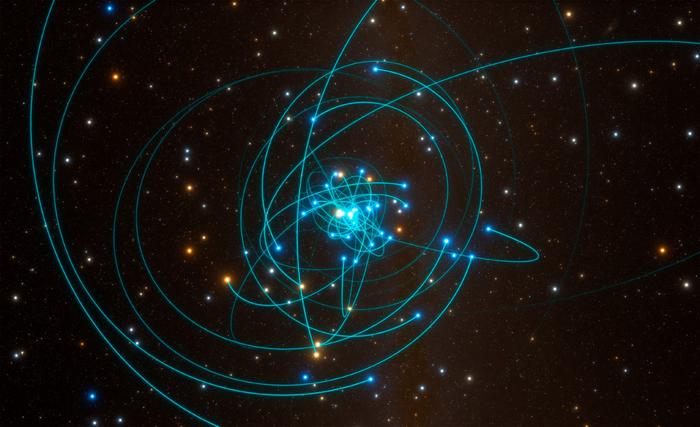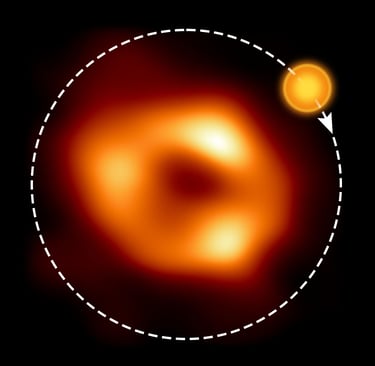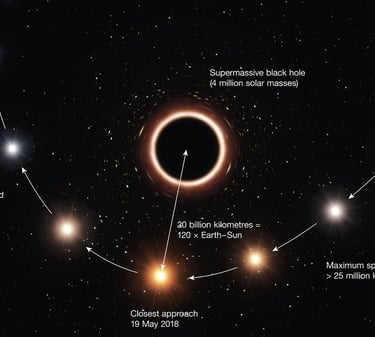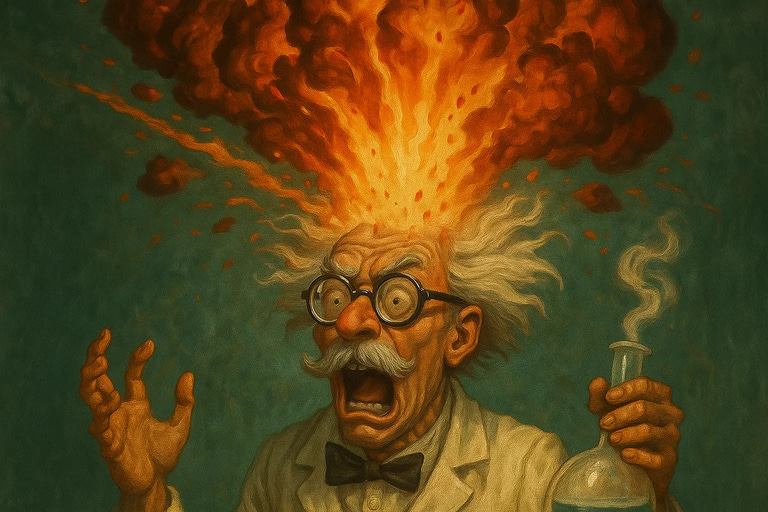Inside Galactic Cores
7/19/20258 min read


Physics has built an elegant model that refuses to fit reality. If you're not afraid to step outside the established patterns, I invite you to explore what might truly lie at the center of galaxies.
Galactic Centers, Black Holes, and an Alternative Interpretation


At the outset, it's worth grounding ourselves in what is well-known and documented. Stars, regardless of their size, are objects that emit enormous amounts of energy. In addition to thermal radiation and visible light, stars — including our Sun — also eject vast quantities of matter: heavy ions, protons, solar winds, and coronal mass ejections.
They also emit a wide spectrum of electromagnetic waves — from radio waves to gamma rays — which are all different manifestations of a single property: disturbances in the energy field. This has been confirmed through observations not only of our Sun but also of other stars.
Stars can be classified according to their brightness and spectral type — from the hottest and brightest types O and B to the cooler types K and M. In simple terms: the greater the mass and energy of a star, the greater its radiation (luminosity), and according to classical models, the stronger its gravity.
And all of this holds true... until a black hole appears.
The Black Hole Paradox:
According to the current physical model, black holes are objects so incredibly dense that their gravitational field prevents even light from escaping. To illustrate: if you bend a stick, it will hold until it breaks. Similarly, matter under extreme gravity can collapse to a "singularity."
Here, Schwarzschild's radius (1916) comes into play, defining a boundary — the event horizon — beyond which nothing can escape. That’s the theory. But what about the energy that must have been released during such a collapse? Where are the effects of this "break"? What about the law of energy conservation?
With such massive gravity, a black hole should — paradoxically — shine like a super star. Yet it's the opposite: it absorbs everything and emits nothing, apart from the hypothetical Hawking radiation (which has never been directly observed).
Another critical flaw in the black hole concept lies in gravity itself, specifically in how it is treated within Einstein's general theory of relativity. It is undoubtedly a mathematically elegant construction — mass curves space, and this curvature is felt as gravity. Beautiful, but what does this mean physically?
If we follow this model, in the case of a black hole, we face an exponential scenario: the more mass, the stronger the curvature; the stronger the curvature, the greater the gravity; and greater gravity leads to further collapse — endlessly. This creates a system collapsing exponentially, with no physical brakes.
Here arises the fundamental problem: a being of infinite density would have to break basic physical laws.
Take Coulomb’s Law — particles with the same charge repel each other. For collapsing matter not to disintegrate under its own charge pressure, we would have to assume that every particle in this structure has a charge opposite to its neighbors. But we do not observe such particles. This alone implies instability.
Furthermore, from LHC experiments, we know that charged elementary particles (like protons) repel rather than merge. It takes immense energy to collide them — and that only artificially, under extremely controlled conditions. In nature, such particles strongly resist clustering in tight spaces.
So a black hole would require millions of such particles to coexist while ignoring mutual repulsion. Moreover, without a physical brake, the collapsing mass would lead to infinite space curvature, and thus to infinite gravity and potentially infinite energy concentrated in the singularity — which contradicts the law of conservation of energy and the physical limitations of any known system.
In short — it's a construct that requires suspending known physical laws to exist. And even if mathematics permits it, nature does not have to follow.
Moreover, if someone proposes that so-called "dark matter" plays the role of a physical brake, it's worth noting that this same matter — if it indeed interacts gravitationally — would prevent the formation of a black hole in the first place by counterbalancing the collapse early on.
Observations vs. Interpretations
Today, we know that at the center of our galaxy lies Sagittarius A* — an object considered to be a supermassive black hole. In its immediate vicinity, within a one-light-year radius, there are over 3,000 stars, each emitting vast amounts of matter and energy.
These matter streams don’t travel through a vacuum — they collide, interfere, and interact. Their behavior is not random — charged particles repel electrostatically. Charles Coulomb (18th century) mathematically described this phenomenon, and today, LHC experiments confirm that colliding ions requires enormous energy.
In nature, the speed of solar wind ions is typically 400–800 km/s, with a maximum of around 2,000 km/s (far less than the speed of light). Therefore, matter streams from many stars approaching each other should begin to repel, creating turbulence and interference zones.
This phenomenon — the creation of vortices, plasma jets, turbulence, and ejections of matter — corresponds perfectly with what we observe as jets: massive eruptions of matter expelled from galactic centers. Yet mainstream science interprets this as a black hole effect.
I'm not claiming that no central entity exists — but it’s worth noting that similar configurations occur on smaller scales (e.g., Jupiter and its moons), which strengthens the analogy with galactic centers:
Stars can orbit a common barycenter without black holes (e.g., binary or triple star systems).
Observations like the orbit of star S2 around Sgr A* do not fully match classical models — they show irregular and variable parameters.
The G2 object (M2 nebula) passed close to the galactic center but was neither torn apart nor absorbed, contrary to predictions.
Each of these phenomena was "rescued" by adding mathematical prosthetics: relativistic corrections, invisible mass, dark energy, etc. Perhaps it's time for a new direction?
A New Perspective
I propose not so much the "rejection" of the black hole model but its reinterpretation. Maybe we don’t need singularities, zero points, to explain energy phenomena in galactic centers?
Let’s consider that:
All known stars emit matter,
These particles have specific properties and do not easily collide,
Galactic centers are densely packed with energy and gravity,
Jets may result from natural overloads of multiple colliding streams, not from the interior of a singularity.
We have all of this on the table — we just need to look at it differently. There is no need for magical objects if we can describe observable reality using known physical and electromagnetic phenomena. Science should be flexible — not clinging to past assumptions, but searching for explanations in what we actually see.
Appendix — Barycenter, Orbital Stability, and Natural Gravitational Hierarchy
Although we often say planets orbit the Sun, in reality they revolve around a common center of mass — the barycenter. In our Solar System, the barycenter often lies within the Sun, but not necessarily at its center. In systems with more comparable masses, the barycenter can lie outside the main object — for example, Pluto and its moon Charon orbit a barycenter located outside of Pluto.
This leads to an interesting observation: the greater the mass of the central object, the more dominant it is in the system, resulting in more stable orbits of nearby objects. Inner planets (Mercury, Venus, Earth) have almost circular, highly stable orbits — while Pluto (and other trans-Neptunian objects) have more eccentric, less stable orbits, more prone to disruption.
The same effect is seen in gas giant planetary systems — Jupiter, Saturn — where the closest moons have stable, circular orbits, while those further away may have tilted or unstable paths.
Curiously, in galactic centers we observe the exact opposite of what the dominant central object model would suggest. Objects close to the center (like star S2 around Sagittarius A*) have highly elliptical, variable orbits, while those further out move stably, according to galactic models.
This suggests that we are not dealing with a single central entity (like a black hole), but rather a collective effect of many massive objects — a kind of "gravitational core" based on mutual interactions, interferences, and multiple sources of mass and energy. Moreover, such systems behave like observed multiple systems — as if a galactic center were an enormous, complex system of many stars, not a single entity.
From a mathematical perspective: a system of three or more bodies is analytically unsolvable — it’s impossible to predict trajectories with a closed equation. Therefore, such systems are inherently unstable and can behave very dynamically.
One may ask: if the center hosts a cluster of many stars, why don't they collide? The answer is not straightforward, but increasingly numerous observations suggest that celestial bodies under extreme conditions may exhibit repulsive behavior. For example? It is more often observed that heated comets veer away from the Sun, as if repelled by it. Similarly, larger bolides entering Earth’s atmosphere sometimes deflect rather than collide. Perhaps, on a macro scale, something akin to micro-level behavior applies — a form of natural repulsion between complex energy structures. But that's a topic for future chapters.
Summary and Preview
The point is not to undermine past achievements, but to have the courage to ask: are we really heading in the right direction?
Sometimes, instead of clinging to theoretical foundations from the 20th century, it’s worth pausing to forget known models and look at the cosmos from the perspective of pure observation.
In the coming chapters, we will explore other fundamental problems of physics — such as atomic structure, energy mechanics, the nature of radiation, or gravity. And while the answers may require us to step outside known frameworks, perhaps that’s where the solution lies.
Ironically, despite increasingly frequent observations that contradict the current model, instead of revising it fundamentally, theoretical physics resorts to ever more complex mathematical constructs that function as prosthetics — meant to keep the old edifice standing at any cost. Perhaps it's high time to look at things with fresh eyes and build something new — simpler, more coherent, and based on observation rather than equations alone.
What ate the black hole? Most likely, it devoured itself — the only question is: how? Before it formed, or because of what it truly is?
Disclaimer:
This is merely a hypothesis and my personal vision. Although largely based on available data and observations, it should not be treated as a scientific source or definitive proof. It is rather an attempt at personal interpretation and a conceptual idea that requires further study and verification.


Hotspot in the accretion disk around Sagittarius A* — the supermassive black hole at the center of the Milky Way. Blurred radio image (EHT) with an illustration of the orbiting hot matter overlaid.
Source: ESO/EHT Collaboration.
Orbit of the star S2 around the supermassive black hole Sagittarius A* at the center of the Milky Way. S2 takes 16 years to complete one orbit and reaches speeds over 25 million km/h, approaching as close as ~20 billion km (120 times the Earth–Sun distance). This observation confirms the predictions of Einstein’s general theory of relativity.
Source: ESO/L.


